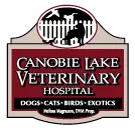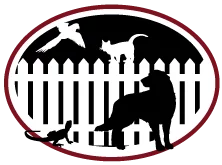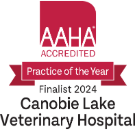Recently the FDA launched its investigation into whether there is a link between some grain-free foods and DCM (Dilated Cardiomyopathy) in dogs- I have been bombarded by concerned clients worrying about what to feed their dogs. I have recommendations!
I have been a recommending grain-free diets for over 15 years to approximately 2000 dog owners and have only seen 2 dogs in the last 15 years diagnosed with DCM. Both of these dogs were of breeds in which DCM had a genetic link and both dogs had parents who had DCM. Keep in mind the FDA noted this investigation showed dogs with DCM that were fed BOTH grain and grain-free diets. The diets they are most concerned about are boutique type diets containing legumes, seeds of legumes and potatoes as main ingredients. For a more details see the FDA report:
Selecting a diet for your dog is not the easiest question to answer. Not any 1 food is right for every dog. Not even 1 food is right for 1 dog. What I mean is, your dog’s diet should be “anything in moderation.” I am not a firm believer in any one pet food to be perfect pet nutrition. In fact, most pet food is highly processed, filled with synthetic nutrients, dyes, preservatives and chemicals. When choosing a pet food, my recommendations are as follows:
- Select a food that is not made in China and preferably in the US or Canada.
- Meat-based diets are best. Dogs are obligate carnivores meaning they should be eating mostly meat but getting protein from other sources like veggies, legumes and grains – as long as those sources are good quality and it is not representing MOST of the protein. Meat should represent most of the protein.
- Grain-free tends to be better than grain diets for 2 reasons: Corn and wheat (the most common grains) have been either genetically modified or doused with chemicals that have made the plants less nutritious and possibly toxic. They are heavily treated with chemicals known to cause cancer (Round-up has been linked to lymphoma in people). Staying away from these 2 grains is important because the wheat and corn (unless verified organic) is not nutritious and potentially dangerous to consume- especially given the low quality of the wheat and corn used in pet foods. Studies have shown how these 2 grains alone can cause severe inflammation and long lasting gastrointestinal disease in people.
- Stay away from meat “meals”. Many dog foods show lamb meal, chicken meal, etc. on the ingredient label. This means the meat (lamb or chicken) has been rendered with chemicals to break it down into a meal. These chemicals are also very toxic. Look for real meat as the first ingredient. If it lists just chicken or just lamb, this is a better option.Petcurian NOW food is one pet food that uses human grade meat and no meals.
- Stay away from preservatives and food dyes. There is no reason to put food coloring in pet food. Food coloring has been shown to cause cancer and inflammation. Do not buy any food with any coloring added. Preservatives including BHA, BHT, sodium nitrite, and sulfites are all dangerous and known cancer causing agents. Look for preservatives like Vitamin E or rosemary oil instead.
- Aim for foods that do not use synthetic vitamins. Whole food vitamins, or those vitamins that you get from the food directly are best. This is not possible in a kibble because it is cooked. Foods that have whole food vitamins are produced by Primal Pet Foods for example.
- Do not feed raw meat from the grocery store. Grocery store meat is meant to be cooked. You risk making your dog severely ill by feeding grocery store raw meat. I do encourage you to cook grocery store meat and feed it to your dog–fresh meat is loaded with more nutrients than dry kibble. Also feel free to feed raw vegetables, these are very good for your dog. Do not feed garlic and onion as these in large quantities can make your dog ill.
- Rotate diets so your dog isn’t eating the same thing every single day. This is very important to achieve moderation. I like choosing a diet based on the recommendations above (those similar to Petcurian NOW and Primal Pet Foods and adding in fresh cooked meat and veggies to it every day. Dogs eating just kibble never get fresh vitamins, minerals and nutrients and you can fix that.
- Feed veggies and fresh cooked cut up meat as treats. I prefer real food treats for dogs. Its cheaper and is nutritionally much better. Whole carrot and celery sticks work great as “chew toys.” Taking left over veggies and meat, divide into ice cube trays and pour bone broth or water over the top. Freeze overnight and surprise, you have a delicious treat for your dog.
- Choose organic, antibiotic free and GMO free foods. Our pets cannot choose their food–you choose it. The fresher and more nutritious the food choice will keep you away from too many costly vet visits.
Always ask your Veterinarian before modifying your dogs diet or if you have questions about pet nutrition. Nutrition should always be discussed during your wellness visit with your Veterinarian.



